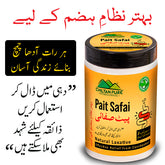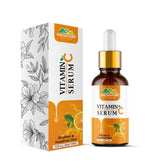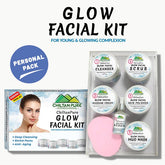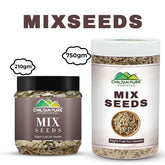Chiltan Pure CEO Claims You Can Beat Coronavirus with ‘Blackseed - kalonji & Honey’
What is Coronavirus?
By the end of 2019, a coronavirus designated as 2019-Nov was identified as the cause of the cluster of pneumonia cases in Wuhan city of China. Nowadays, it is considered to be a global health emergency. It is causing community-acquired respiratory tract infections in adults as well as children, particularly those who have the underlying pulmonary disease already.Coronaviruses:
These are the medium-sized enveloped positive-stranded RNA Viruses and are given the name coronavirus because of their crown-like characteristic appearance in the electron microscope. Although these viruses are ubiquitous in temperate climates their peak rate of occurrence is in winter. Smaller peaks are seen in fall or spring as well.Cure of Coronavirus in the light of Islam:
Now that we know all the precautions that we can do to prevent Coronavirus illness, the question arises: What can one do if it gets attacked by the coronavirus? Is there any cure if one encounters the virus by any ill person? Science is still working on it. After research, only a few possible remedies have been suggested, but not of very much significance. The answer to all these questions can be found in the light of Islam. Well, for that we have to go through some Ahadees. Hazrat Ayesha (RA) states that The Holy Prophet (PBUH), the last messenger of Allah, said: “This black seed is a cure for all diseases except poison.” She asked, “What is poison?” The Holy Prophet (PBUH) replied, “Death.” In other words, only death can’t be treated by blackseed.
All other ailments can be treated well by blackseed. So how is it possible that the coronavirus is stronger than something that can cure anything but death?
The Holy Prophet (PBUH) also gave a hint that honey can cure illness in his hades. He says, “There are two cures for you: honey and the Quran.”
An Arabic writer quotes the words of the Prophet (PBUH) as: “Honey is a medicine for the body and the Quran is a medicine for the soul” He added, “Benefit yourself from the use of the Quran and honey.”
The Prophet Muhammad (PBUH) said on an occasion, “By Him, in whose hand is my soul, eat honey, for there is no house in which honey is kept for which angels won’t ask for mercy.”
He added, “If a person eats honey, a thousand remedies enter his stomach, and a million diseases will come out.”
In another occasion, he is related to have said, “He who desires protection, let him eat honey.”
Now how is this possible that honey has got no role in the prevention and cure of the Coronavirus.
In the light of Islam, the cure of the coronavirus can be found in olives. The holy prophet (PBUH) says, “Eat olive oil and massage with it-it is a blessed tree.”
Research has proven olive oil to have a role in strengthening the immune system.
So, adding black seed, olive and honey to your life can not only prevent the occurrence of disease but it also eradicates any disease that attacks the person.
You can order any of these natural products from chiltanpure.com to get the benefits and protection from diseases as big as the coronavirus.
In other words, only death can’t be treated by blackseed.
All other ailments can be treated well by blackseed. So how is it possible that the coronavirus is stronger than something that can cure anything but death?
The Holy Prophet (PBUH) also gave a hint that honey can cure illness in his hades. He says, “There are two cures for you: honey and the Quran.”
An Arabic writer quotes the words of the Prophet (PBUH) as: “Honey is a medicine for the body and the Quran is a medicine for the soul” He added, “Benefit yourself from the use of the Quran and honey.”
The Prophet Muhammad (PBUH) said on an occasion, “By Him, in whose hand is my soul, eat honey, for there is no house in which honey is kept for which angels won’t ask for mercy.”
He added, “If a person eats honey, a thousand remedies enter his stomach, and a million diseases will come out.”
In another occasion, he is related to have said, “He who desires protection, let him eat honey.”
Now how is this possible that honey has got no role in the prevention and cure of the Coronavirus.
In the light of Islam, the cure of the coronavirus can be found in olives. The holy prophet (PBUH) says, “Eat olive oil and massage with it-it is a blessed tree.”
Research has proven olive oil to have a role in strengthening the immune system.
So, adding black seed, olive and honey to your life can not only prevent the occurrence of disease but it also eradicates any disease that attacks the person.
You can order any of these natural products from chiltanpure.com to get the benefits and protection from diseases as big as the coronavirus.
Epidemiology and Transmission:
By the end of 2019, in the Hubei province of China, more than 20,000 labs confirmed the coronavirus as the cause of respiratory infections. It is sporadic but increasing cases are seen globally in Asia, Australia, Europe and even in the United States. Human to human transfer has been found in China and other countries including the US. Initially, seafood markets were considered to be a source of its spread as most of the patients had worked in or visited the market.
This marked sold rabbits, snakes, and other animals along with the seafood. The market was closed subsequently for disinfection.
According to newer research, bats have a close association with the disease and is considered to be a primary source of this virus.
With the progression of the outbreak, many laboratories confirmed that a lot of cases had no association with the market visit. Many cases of coronavirus were identified among health care workers and other contacts of the patients of coronavirus.
Initially, seafood markets were considered to be a source of its spread as most of the patients had worked in or visited the market.
This marked sold rabbits, snakes, and other animals along with the seafood. The market was closed subsequently for disinfection.
According to newer research, bats have a close association with the disease and is considered to be a primary source of this virus.
With the progression of the outbreak, many laboratories confirmed that a lot of cases had no association with the market visit. Many cases of coronavirus were identified among health care workers and other contacts of the patients of coronavirus.
Incubation Period:
The incubation of the Coronavirus Epidemic in China is almost 14 days following exposure. That means the virus can be transmitted from one person to another within 14days of exposure. Whether asymptomatic patients can transmit the virus to others or not, is still controversial. Usually, the fever and other respiratory symptoms of the disease occur within 3 to six days of exposure.Clinical Presentation:
A patient of coronavirus can present with a broad spectrum of diseases. The spectrum can range from mild respiratory illness to severe diseases like respiratory failure, septic shock or even other organ failures that may require intensive care. However, the most frequent presentation of coronavirus infection is pneumonia with the following characteristics- Fever
- Cough
- Dyspnea
- Bilateral infiltrates on chest imaging
Data analysis:
A study was done on over 41 initial cases of pneumonia, that was identified in the outbreak, the following was the record:- 73% of the cases were males
- Nearly, 98% had a fever
- 76% had a cough
- 55% had dyspnea after almost 8 days of infection
- 44% of the cases had myalgia or fatigue
- Lymphopenia was common
- Ground glass opacities
- Subsequent consolidation
- Multi-lobular consolidation
Evaluation and Diagnosis:
 The approach to the initial management of the infection puts a focus on
The approach to the initial management of the infection puts a focus on
- Early recognition of suspected cases
- Institution of infection control measures
- Notify the public health officials
- Reside in China (within the last 14 days)
- Have recently travelled to China (within the last 14 days)
- Have had close contact with a confirmed or suspected case of coronavirus
Prevention and control of 2019-nCoV:
Home care to be provided for patients with suspected 2019-nCoV infection with mild symptoms. Instructions by the World Health Organization are:- The patient is to be kept in a ventilated single room.
- The number of caretakers should be limited to avoid unnecessary contact. It is better to assign the task of care of the patient to just one person who is in Good Health and has no risk condition. Visitors should not be allowed.
- Other members of the household should preferably stay in a different room. If that is not possible then they should maintain a minimum distance of one meter from the patient.
- Minimize the shared space and limit the locomotion of the patient. If there is any shared space like the kitchen and washroom, then keep it well-ventilated.
Management of Contacts:
- The attendant should wear a tightly fitted mask and should not touch the mask during patient handling. He should wash the hands before and after using the gloves
- All household members should be considered as contacts and their health should be monitored.
General Measures:
- Hand hygiene is very important. Wash with a soap and water combination and prefer to use disposable towels.
- Respiratory hygiene is also important. Cover the mouth or nose with a medical mask while coughing and sneezing. At least, flexed elbows or tissues should be used.
- Discard the material used to cover the mouth or nose after using it. (For example, handkerchiefs should be washed with regular soap or detergent and water.
- Avoid direct contact with body fluids of suspected cases particularly respiratory or oral secretions
- A lined container should keep the waste of used tissues and other stuff used by the patient or the suspected cases or the carriers. The waste materials used by them, in other words, should not be mixed with the normal waste material of the home.
- The diluted bleach solution should be used to clean frequently touched surfaces like furniture (1part bleach should be mixed with 99 parts water)
- No sharing of cigarettes, toothbrushes and eating utensils. If not discarded, utensils should at least be cleaned with water and detergent before and after use.
- Use disposable gloves and plastic aprons while attending patients,
- Avoid touching your nose, eyes, and mouth with dirty or unwashed hands
- Avoid going outside when sick
- Contact a health care provider immediately, if you suspect Coronavirus infection due to exposure.
Infection Prevention and Control for Health Care Professionals:
-
- Surgical mask, eye protection, gloves, and gowns should be used during patient handling
- Health care workers should self-monitor themselves for any respiratory symptoms after 14 days of exposure to a 2019-nCoV diseased patient.
Tags:




![Red Onion Oil 🧅 Reduces Hair Fall & Accelerates Hair Regrowth [پیاز کا تیل].. Trending.... 🔥 - ChiltanPure](http://chiltanpure.com/cdn/shop/products/red-onion-oil-reduces-hair-fall-amp-accelerates-hair-regrowth-piaz-ka-til-trending-394813_165x.jpg?v=1707464619)
![Red Onion Oil 🧅 Reduces Hair Fall & Accelerates Hair Regrowth [پیاز کا تیل].. Trending.... 🔥 - ChiltanPure](http://chiltanpure.com/cdn/shop/products/red-onion-oil-reduces-hair-fall-amp-accelerates-hair-regrowth-piaz-ka-til-trending-329640_165x.jpg?v=1708127491)















Leave a comment
Please note, comments need to be approved before they are published.